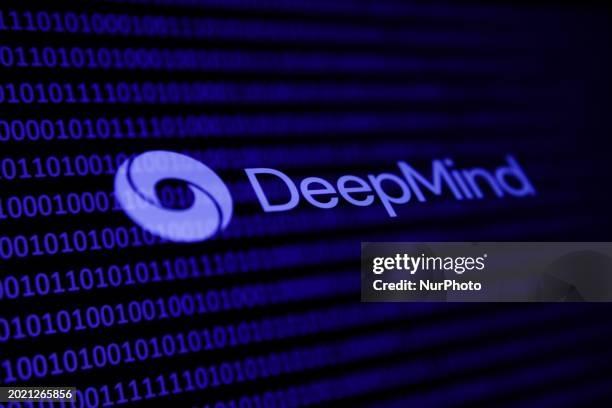Miguel Llorca is Microsoft Regional Director, Dual MVP & MCT | LinkedIn Top Voice | Author, LinkedIn Learning | Public Speaker.
In 2020, Google DeepMind unveiled a technology that fundamentally changed biology forever. AlphaFold, an AI that could predict the 3D structure of proteins with stunning accuracy, solved a 50-year-old grand challenge. The scientific journal Nature called it a revolution. Today, with over 200 million protein structures predicted and made public, its impact is undeniable—accelerating everything from mRNA vaccine development to the design of plastic-eating enzymes.
Now, DeepMind is pointing its formidable AI prowess at an even greater mystery: the vast, unread portion of the human genome. And if AlphaFold was the earthquake, what comes next could be the tectonic shift that reshapes medicine itself.
The company’s new system, AlphaGenome, is the first large-scale application of AI to decode 98% of our DNA that does not code for proteins. For decades, this “dark matter” of the genome has been a black box for scientists. We knew it held the keys to understanding how genes are switched on and off, but identifying these crucial regulatory elements was like finding specific light switches in a dark mansion the size of a city. This lack of understanding is not just an academic problem; it’s a multi-billion-dollar bottleneck in the business of medicine.
The $2 Billion Gamble Of Drug Discovery
For any executive in the pharmaceutical or biotech space, the numbers are grimly familiar. Bringing a new drug to market costs, on average, $2.23 billion. Worse, over 90% of drugs that enter human clinical trials fail. A primary reason for this staggering failure rate is an incomplete understanding of the genetic basis of disease. Companies are forced to place massive bets on drug targets that ultimately prove ineffective or unsafe.
This is where 98% of non-coding DNA becomes the villain of the story. It contains millions of “enhancers” and “promoters”—sequences that act as the control panel for our 21,000 genes. A tiny mutation in one of these switches can leave a cancer-suppressing gene permanently off or an inflammatory gene stuck in the “on” position. Without a map of these switches, finding the true origin of complex diseases like multiple sclerosis, lupus, and schizophrenia is a slow, expensive,and often fruitless endeavor.
From Protein Folding To Genome Unlocking
AlphaGenome represents a direct assault on this problem, built on the same principles of deep learning that made AlphaFold a success. While AlphaFold learned the language of amino acids to predict protein shapes, AlphaGenome has learned the complex grammar of the DNA sequence to predict the function of its non-coding regions.
By analyzing the intricate patterns in the genome, the AI model can identify which segments are likely to be regulatory elements with remarkable precision. In its initial release, DeepMind has already used it to generate a catalogue of over 370 million potential regulatory elements, providing a list of high-potential candidates for experimental validation. This isn’t just an incremental improvement; it’s a foundational leap. It provides the first comprehensive map of the genome’s control panel.
This is what we call the “AlphaFold Effect” 2.0. AlphaFold didn’t just provide answers; it changed the questions scientists could ask. It transformed protein biology from a field of slow, lab-based discovery to one of rapid, computational exploration.
AlphaGenome is poised to do the exact same thing for genomics. It gives hundreds of thousands of researchers around the world—from academic labs to biotech startups—a powerful tool to generate and test new hypotheses about disease at a speed that was previously unimaginable.
Rewriting The ROI Of Modern Medicine
The business implications are profound. In a sector where a few percentage points of improvement in R&D efficiency can unlock billions in value, AlphaGenome is a potential game-changer.
• Precision Drug Targeting: Instead of targeting a gene that is merely associated with a disease, drug developers can now identify the precise regulatory switch that is broken. This allows for the design of more effective, targeted therapies with a higher probability of success and fewer side effects.
• Democratizing Innovation: By making its predictions publicly available, DeepMind is leveling the playing field. A small biotech startup can now leverage this data to identify a novel target for a rare genetic disease, a task that previously would have required a massive, resource-intensive screening program only accessible to Big Pharma.
• Accelerating Personalized Medicine: The ultimate promise of genomics is medicine tailored to an individual’s unique genetic makeup. AlphaGenome brings us a significant step closer to that reality by helping us understand how variations in the non-coding genome affect an individual’s disease risk and response to treatment.
This technological disruption is happening within a booming economic context. The global genomics market is projected to hit nearly $95 billion by 2028, while the market for AI in healthcare is forecast to soar past $180 billion by 2030. AlphaGenome sits squarely at the intersection of these two explosive trends, acting as a powerful engine for both.
For leaders, investors and innovators, the message is clear: The era of digital biology is fully upon us. Just as no serious business today can operate without an internet strategy, no life sciences organization will remain competitive without an AI-native strategy. The first genomic revolution was about sequencing the book of life. This second revolution, powered by AI, is about finally learning how to read it. AlphaGenome hasn’t just given us a new chapter; it’s given us the code to understand the entire story.
Forbes Technology Council is an invitation-only community for world-class CIOs, CTOs and technology executives. Do I qualify?


